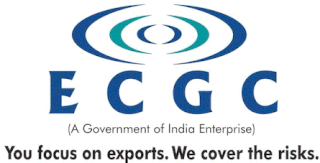
Insurance is a means of protection from financial loss in which, in exchange for a fee, a party agrees to compensate another party in the event of a certain loss, damage, or injury. It is a form of risk management, primarily used to protect against the risk of a contingent or uncertain loss.
Political risk insurance is a type of insurance that can be taken out by businesses, of any size, against political risk—the risk that revolution or other political conditions will result in a loss.

Factoring is a financial transaction and a type of debtor finance in which a business sells its accounts receivable to a third party at a discount. A business will sometimes factor its receivable assets to meet its present and immediate cash needs. Forfaiting is a factoring arrangement used in international trade finance by exporters who wish to sell their receivables to a forfaiter. Factoring is commonly referred to as accounts receivable factoring, invoice factoring, and sometimes accounts receivable financing. Accounts receivable financing is a term more accurately used to describe a form of asset based lending against accounts receivable. The Commercial Finance Association is the leading trade association of the asset-based lending and factoring industries.
Credit risk is the possibility of losing a lender holds due to a risk of default on a debt that may arise from a borrower failing to make required payments. In the first resort, the risk is that of the lender and includes lost principal and interest, disruption to cash flows, and increased collection costs. The loss may be complete or partial. In an efficient market, higher levels of credit risk will be associated with higher borrowing costs. Because of this, measures of borrowing costs such as yield spreads can be used to infer credit risk levels based on assessments by market participants.

Financial services are economic services tied to finance provided by financial institutions. Financial services encompass a broad range of service sector activities, especially as concerns financial management and consumer finance.

Accounts receivable, abbreviated as AR or A/R, are legally enforceable claims for payment held by a business for goods supplied or services rendered that customers have ordered but not paid for. The accounts receivable process involves customer onboarding, invoicing, collections, deductions, exception management, and finally, cash posting after the payment is collected. These are generally in the form of invoices raised by a business and delivered to the customer for payment within an agreed time frame. Accounts receivable is shown in a balance sheet as an asset. It is one of a series of accounting transactions dealing with the billing of a customer for goods and services that the customer has ordered. These may be distinguished from notes receivable, which are debts created through formal legal instruments called promissory notes.
Underwriting (UW) services are provided by some large financial institutions, such as banks, insurance companies and investment houses, whereby they guarantee payment in case of damage or financial loss and accept the financial risk for liability arising from such guarantee. An underwriting arrangement may be created in a number of situations including insurance, issues of security in a public offering, and bank lending, among others. The person or institution that agrees to sell a minimum number of securities of the company for commission is called the underwriter.
Guarantee Security Life Insurance Company, or GSLIC, represented one of the most severe cases of insurance fraud in Florida history. According to the Florida Insurance Commissioner:
[GSLIC] was, almost from the beginning, a massive fraud, aided and abetted by blue-ribbon brokers and licensed professionals motivated by their own self-interest. The fraud at Guaranteed Security was a carefully orchestrated bank robbery. But the thieves disguised themselves with the help of accountants and brokers and lawyers rather than wearing silk-stocking masks.
Debtor finance is a process to fund a business using its accounts receivable ledger as collateral. Generally, companies that have low working capital reserves can get into cash flow problems because invoices are paid on net 30 terms. Debtor finance solutions fund slow-paying invoices, which improves the cash flow of the company and puts it in a better position to pay operating expenses.

Compagnie Française d'Assurance pour le Commerce Extérieur (Coface) is a credit insurer that operates worldwide' in addition to offering debt collection services, factoring and business information, and bonds.

Allianz Trade is an international insurance company that offers a range of services, including trade credit insurance, debt collection, surety bonds and guarantees, business fraud insurance and political risk protection.

The Korea Deposit Insurance Corporation (KDIC) is a deposit insurance corporation, established in 1996 in South Korea to protect depositors and maintain the stability of the financial system. The main functions of KDIC are insurance management, risk surveillance, resolution, recovery, and investigation.

Atradius provides trade credit insurance, surety and collections services worldwide through a presence in more than 50 countries around the globe. It is the credit insurance arm of Grupo Catalana Occidente (GCO.MC). Credit insurance, bonding and collections products help protect companies throughout the world from payment risks associated with selling products and services on trade credit. In 2022 the company had revenues of EUR 2.4 billion. The company is rated ‘A (excellent) stable outlook’ by AM Best and 'A1, outlook stable’ by Moody's.
Bond insurance, also known as "financial guaranty insurance", is a type of insurance whereby an insurance company guarantees scheduled payments of interest and principal on a bond or other security in the event of a payment default by the issuer of the bond or security. It is a form of "credit enhancement" that generally results in the rating of the insured security being the higher of (i) the claims-paying rating of the insurer or (ii) the rating the bond would have without insurance.
Insurance in the United States refers to the market for risk in the United States, the world's largest insurance market by premium volume. According to Swiss Re, of the $6.861 trillion of global direct premiums written worldwide in 2021, $2.719 trillion (39.6%) were written in the United States.

ECGC Limited is a government owned export credit agency of India. It is under the ownership of the Ministry of Commerce and Industry, Government of India, and is headquartered in Mumbai, Maharashtra. It provides export credit insurance support to Indian exporters and banks. Its topmost official is designated as Chairman and Managing Director, who is a central government civil servant under ITS cadre.
Trade finance is a phrase used to describe different strategies that are employed to make international trade easier. It signifies financing for trade, and it concerns both domestic and international trade transactions. A trade transaction requires a seller of goods and services as well as a buyer. Various intermediaries such as banks and financial institutions can facilitate these transactions by financing the trade. Trade finance manifest itself in the form of letters of credit (LOC), guarantees or insurance and is usually provided by intermediaries.
Weather insurance insures against weather variations. There are two insurable types of weather insurance: conditional weather insurance and weather cancellation insurance.

Supply chain financing is a form of financial transaction wherein a third party facilitates an exchange by financing the supplier on the customer's behalf. The term also refers to the techniques and practices used by banks and other financial institutions to manage the capital invested into the supply chain and reduce risk for the parties involved.
The Central Insurance of Iran is the agency in charge of regulating the Iranian insurance industry. There are more than 25 insurance companies in Iran that work as a private companies and there is just one state owned company that known as "Bimeh Iran insurance Co.".








